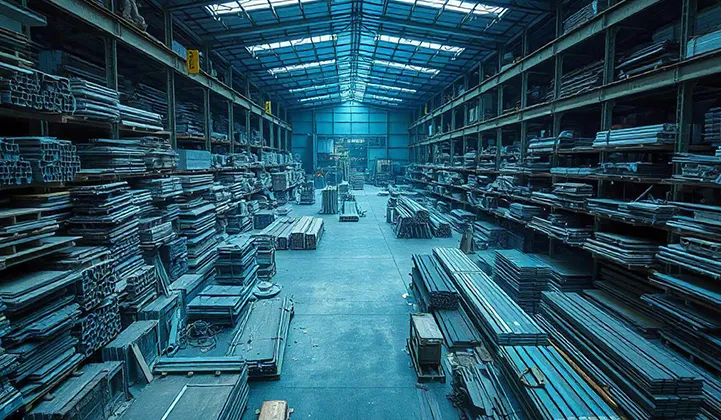Corrosion is one of the biggest challenges in the steel industry, affecting durability, safety, and aesthetics in various applications. For steel sheets used in construction, automotive, and industrial settings, maintaining corrosion resistance is essential for longevity and reliability. This article will explore common techniques and treatments that enhance corrosion resistance in steel sheets, from traditional methods like galvanization to modern innovations, highlighting the benefits and challenges of each approach.
1. The Importance of Corrosion Resistance in Steel Sheets
Corrosion not only compromises the strength and integrity of steel but also leads to costly repairs and replacements. Steel sheets are used in structures exposed to the elements, including buildings, bridges, vehicles, and machinery. When steel corrodes, it weakens, which can result in structural failures, safety hazards, and increased maintenance expenses. Corrosion resistance treatments extend the life of steel products, reduce costs, and support sustainability by minimizing waste and resource use over time.
2. Traditional Corrosion-Resistant Treatments
Two traditional methods have long been employed to protect steel sheets from corrosion: galvanization and coating with organic materials.
- Galvanization involves applying a zinc coating to steel, creating a protective barrier that prevents rusting. Zinc sacrifices itself by corroding before the steel underneath, effectively delaying rust formation. Hot-dip galvanizing, where steel is dipped in molten zinc, is the most common and effective method. It is used widely in construction, automotive parts, and outdoor infrastructure, where steel sheets are regularly exposed to moisture.
- Organic Coatings: Paints, epoxies, and powder coatings create a physical barrier to keep moisture and oxygen away from the steel surface. These coatings can be customized for different levels of exposure and durability. For instance, in marine environments, thicker epoxy coatings are often used to withstand constant exposure to saltwater. Organic coatings are also beneficial because they can be reapplied periodically, offering flexible maintenance options for steel structures.
3. Modern Advances in Corrosion-Resistant Treatments
Recent innovations have introduced advanced methods that improve upon traditional treatments, offering higher levels of protection and environmental benefits.
- Electrogalvanization is a modern alternative to traditional galvanization that uses an electrical current to deposit a thin layer of zinc on the steel sheet. This process results in a smooth, uniform coating that is ideal for applications requiring a clean finish, such as automotive bodies. Electrogalvanized steel sheets offer high corrosion resistance without the bulkier coating associated with hot-dip galvanization.
- Alloying and Advanced Coatings: Certain metals, like chromium, molybdenum, and nickel, are alloyed with steel to create stainless or weather-resistant steels. These alloys enhance corrosion resistance while maintaining the strength of steel. Weathering steel, for instance, forms a stable rust-like layer on its surface that protects it from further corrosion. This type of steel is widely used in bridges, sculptures, and architecture where aesthetics and minimal maintenance are priorities.
- Nanocoatings are emerging as a promising solution, utilizing nano-sized particles to form an ultra-thin, invisible layer on the steel’s surface. These coatings are highly resistant to water and chemicals, offering superior protection without altering the appearance or weight of the steel. Nanocoatings are particularly valuable in industries requiring sterile or high-precision equipment, such as medical and food processing machinery.
4. Environmental Benefits of Corrosion-Resistant Steel Sheets
Corrosion-resistant treatments contribute to sustainability by reducing the need for replacement and repair, which conserves raw materials and reduces waste. Using corrosion-resistant steel sheets in construction and infrastructure can lower the carbon footprint of these industries by minimizing the frequency of rebuilding or refurbishing structures. Additionally, certain treatments, like alloying with recycled materials and low-emission coating processes, help steel producers meet environmental regulations.
Corrosion-resistant treatments also contribute to a longer lifespan of structures, reducing the environmental impact associated with manufacturing new steel products. This approach aligns with sustainable practices by promoting durability, reducing resource consumption, and supporting the circular economy.
5. Challenges and Costs Associated with Anti-Corrosion Treatments
While corrosion-resistant treatments offer substantial benefits, they also come with challenges. Traditional galvanization can increase the weight of steel sheets, which may not be suitable for applications requiring lightweight materials. Alloying techniques, especially with metals like chromium and nickel, can be costly due to the price of raw materials. Advanced coatings, like nanocoatings, are still in the early stages of adoption and may have high upfront costs.
To balance these challenges, companies often adopt a combination of treatments or focus on high-risk areas to optimize cost and performance. For example, only specific parts of a steel structure may be treated with costly alloys, while other areas are protected with more affordable organic coatings.
Conclusion
The diverse techniques and treatments available for corrosion resistance reflect the steel industry’s commitment to durability, safety, and environmental responsibility. From galvanization and organic coatings to modern innovations like nanocoatings, these methods play a crucial role in extending the lifespan and performance of steel sheets. As technology advances, the industry will likely see even more efficient, sustainable, and cost-effective options, helping steel sheets withstand the demands of the future.

